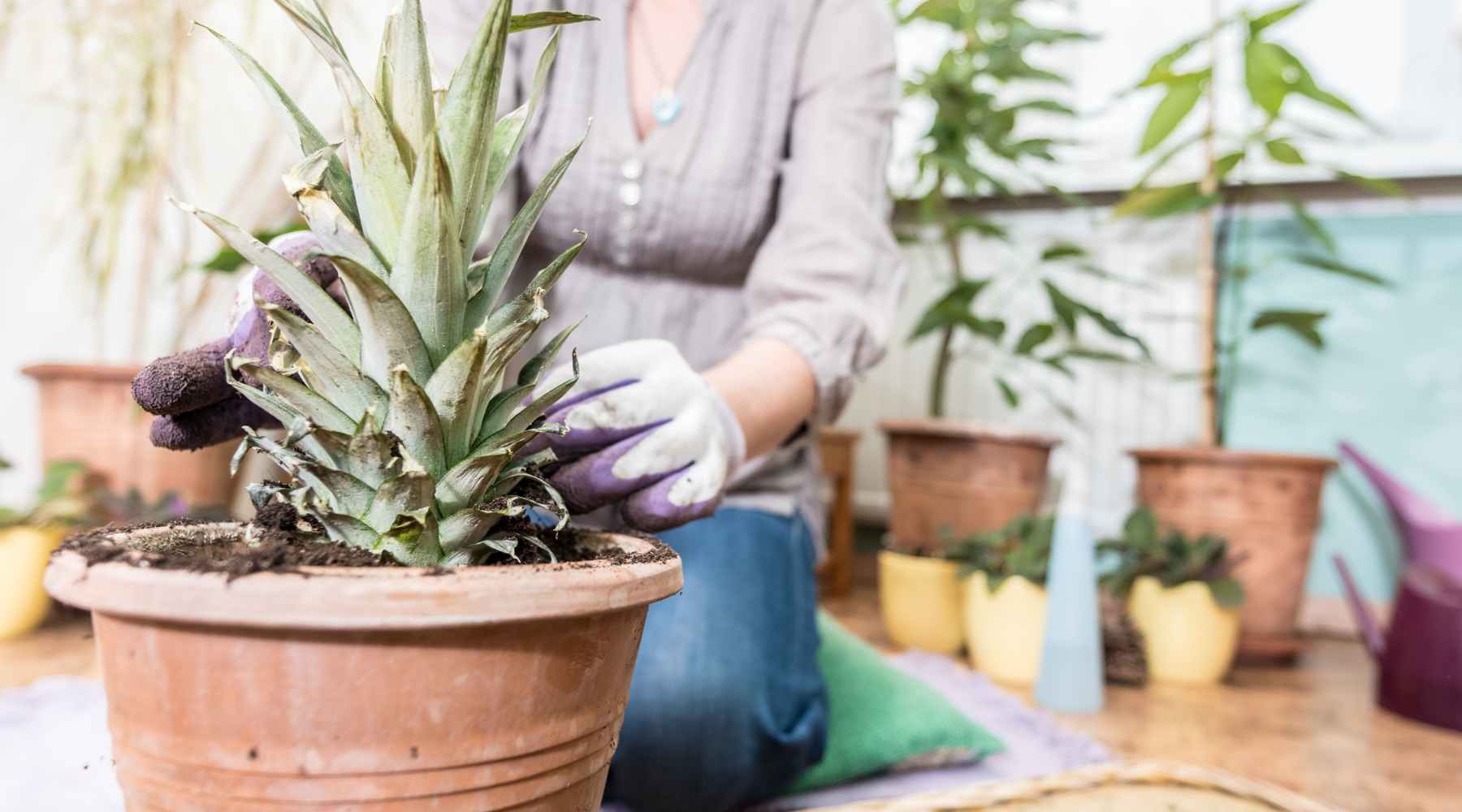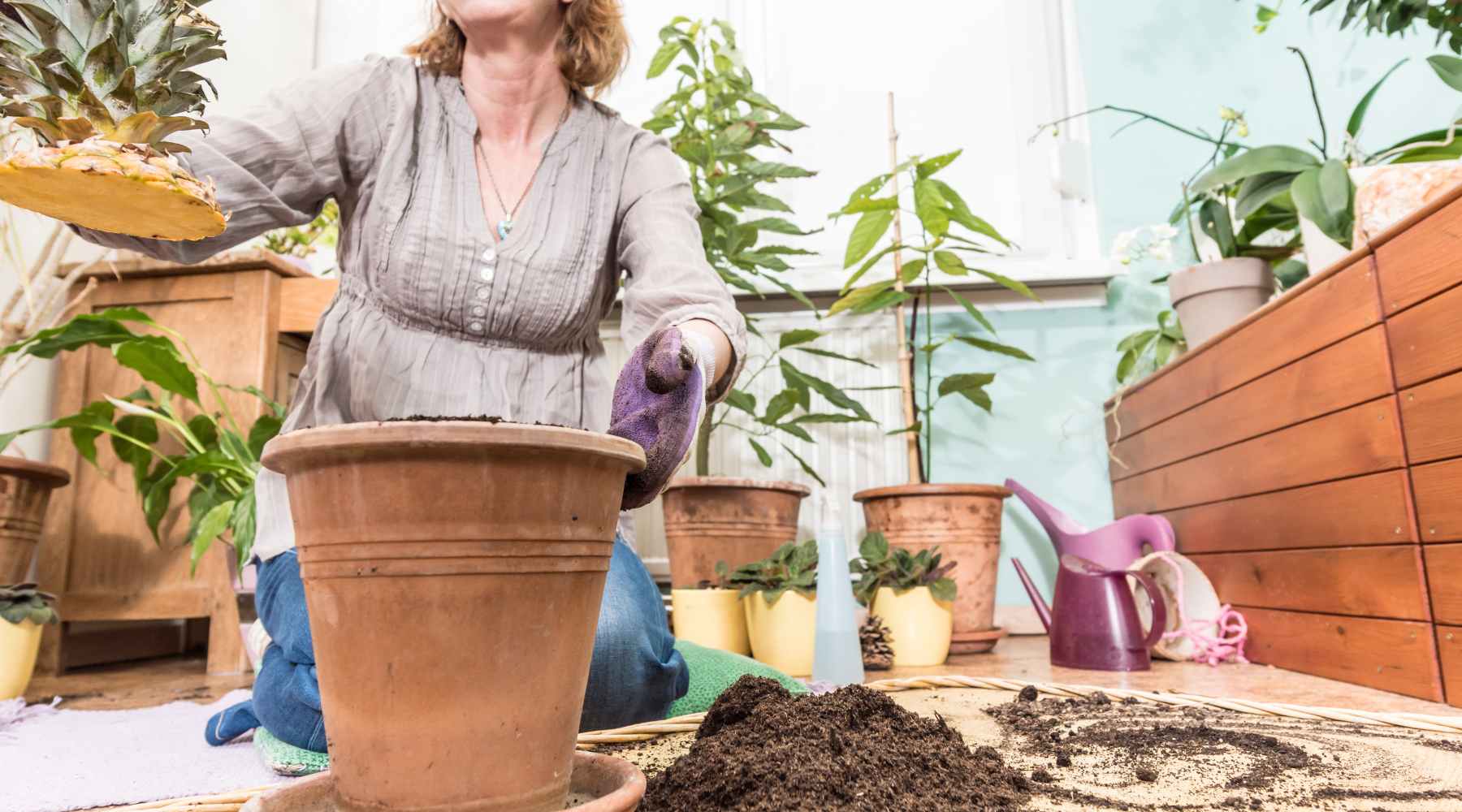Who knew you could grow a tropical plant in your home? The pineapple plant (Ananas comosus) has become increasingly popular in recent years, thanks to its exotic charm and surprisingly easy maintenance. While many people assume tropical plants like pineapples can only thrive in warm, outdoor climates, they can also be successfully grown indoors with the right care. This guide will walk you through every aspect of pineapple plant care, from planting to maintenance, repotting, and troubleshooting common issues.
How to Grow Your Pineapple Plant
Starting Your Pineapple Plant

In some regions, you can purchase a pineapple plant that is already growing. However, many people prefer to propagate their own plant from a fresh pineapple fruit. To do this:
- Choose a healthy pineapple – Look for a pineapple with green, fresh-looking leaves. Avoid ones with brown or wilted leaves.
- Remove the crown – Cut off the top of the pineapple, leaving about an inch of fruit attached.
- Prepare the crown – Remove the lower leaves to expose about an inch of the stem. Let the crown dry for a day or two to prevent rot.
- Rooting the crown – Place the crown in water or directly into soil. If using water, change it every few days until roots appear, then transfer to soil.
Choosing the Right Soil
Pineapple plants thrive in well-draining, slightly acidic soil. A 50/50 mix of orchid bark and multi-purpose compost works best. Ensure the pot has drainage holes to prevent waterlogging.
Optimal Growing Conditions
- Temperature: Pineapple plants prefer warm conditions, ideally above 16°C (60°F). Keep them in a spot where temperatures remain consistent year-round.
- Light: These plants love bright, indirect sunlight. A sunny windowsill, conservatory, or countertop that gets at least 6 hours of light per day is ideal.
- Humidity: Pineapples prefer medium humidity levels. If your home is very dry, occasionally misting the leaves can help.
- Outdoor Growth: During summer, you can place your pineapple plant outside as long as the temperature remains warm. If persistent rain occurs, bring it back inside to avoid excessive moisture.
How to Care for Your Pineapple Plant

Watering and Moisture Management
Pineapple plants prefer moderate watering. Here are some key tips:
- Water when the top inch of soil feels dry, but avoid letting the soil dry out completely.
- Never overwater, as pineapples hate soggy roots.
- Pour water at the base of the plant rather than on the leaves to prevent rot.
Fertilization
Use a bromeliad or balanced liquid fertilizer (such as 10-10-10) every few months to keep your plant healthy. Fertilizing too frequently can lead to excessive leaf growth without promoting fruit development.
Pruning and Maintenance
- Remove any dead or yellowing leaves to keep your plant looking tidy.
- Wipe the leaves with a damp cloth to remove dust and help with photosynthesis.
- If your pineapple plant produces suckers (small shoots at the base), you can remove and replant them to grow new plants.
Encouraging Flowering and Fruit Production
A pineapple plant typically takes 2-3 years to produce fruit. If yours isn’t flowering, try the following:
- Place an apple near the plant and cover it with a plastic bag for a few days. The ethylene gas released by the apple can stimulate flowering.
- Ensure your plant is getting enough sunlight and is not root-bound in a small pot.
How to Repot Your Pineapple Plant

Repotting is essential for a pineapple plant’s long-term health, especially if it stops growing or fails to produce a flower. Here’s how to do it properly:
- Choose the right pot – Select a well-draining pot one size larger than the current one.
- Prepare fresh soil – Use a mix of orchid bark and all-purpose compost.
- Transfer the plant – Gently remove the plant from its old pot, shaking off excess soil. Place it in the new pot and add fresh soil around the roots.
- Water lightly – Give it a small amount of water and resume normal care.
Repotting is best done in late summer or early autumn, after the pineapple fruit has matured.
Troubleshooting Common Pineapple Plant Problems
Yellowing Leaves
- Cause: Overwatering or poor drainage.
- Solution: Allow the soil to dry before watering again and ensure proper drainage.
Brown Leaf Tips
- Cause: Low humidity or underwatering.
- Solution: Increase humidity by misting the leaves occasionally and ensure the plant receives enough water.
No Flower or Fruit Development
- Cause: Lack of light or nutrients.
- Solution: Move the plant to a brighter location and use a fertilizer designed for bromeliads.
Root Rot
- Cause: Overwatering.
- Solution: Remove affected roots, repot in fresh, dry soil, and reduce watering frequency.
Check Out - Mastering the Art of Growing Your Own Pineapple Plant
Final Thoughts

Growing a pineapple plant at home is a fun and rewarding experience. With the right conditions, proper care, and a little patience, your plant can thrive and even produce its own fruit. Whether you're growing it for its ornamental appeal or to enjoy a homegrown pineapple, this tropical plant is a great addition to any indoor garden.
If you're ready to start your pineapple-growing journey, check out our website for all the tools and starter kits you need! Happy planting!

























